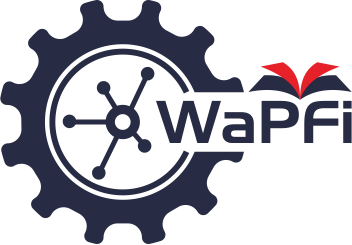Penerapan flipped classroom dengan google classroom dan youtube untuk meningkatkan hasil belajar pada materi elastisitas
Abstract
Since the Covid COVID-19 pandemic until now, student learning techniques have changed significantly. Likewise, the development of technology is increasing. Students and Teachers began to routinely access various learning applications with the devices they have, including Zoom, Google (Google Classroom and YouTube), and various other Learning Management System (LMS) applications. SMAIT Gema Nurani actively utilizes various tools provided by Google as a learning tool. However, this is not in line with the value of student learning outcomes. Based on the evaluation results of the previous material, it was concluded that most students only relied on the learning process in the classroom without learning the material beforehand. Therefore, the researcher tried to apply the flipped classroom learning model with Google Classroom and YouTube to improve the learning outcomes of students on elasticity. The method used in this research is action research is action research (Classroom Action Research). This research was conducted in 2 cycles. This average student learning result in cycle 1 was 64 (on a scale of 100) and the average student learning result in cycle 2 was 82 (on a scale of 100). Based on this, it can be concluded that by applying the flipped classroom learning model by utilizing Google Classroom and YouTube, there was an increase in the learning outcomes of students on elasticity material.
Downloads
References
Azhari, E. K., & Citrawati, T. (2022). Dampak Pandemi Covid 19 Terhadap Pendidikan Di Indonesia. Pena Kreatif : Jurnal Pendidikan, 11(2), 196–204. https://doi.org/10.29406/jpk.v11i2.3412
Chrismawati, M., & Septiana, I. (2021). Peningkatan Hasil Belajar Melalui Model Flipped Classroom Berbantuan Media Power Point Dan Audio Visual Di Sekolah Dasar. Edukatif : Jurnal Ilmu Pendidikan, 3(5), 1928–1934. https://edukatif.org/index.php/edukatif/article/view/695
Fauzi, Y. N., Irawati, R., & Aeni, A. N. (2022). Model Pembelajaran Flipped Classroom Dengan Media Video untuk Meningkatkan Pemahaman Konsep Matematis Siswa. Jurnal Cakrawala Pendas, 8(4), 1537–1549.
Flores, Ò., del-Arco, I., & Silva, P. (2016). The flipped classroom model at the university: analysis based on professors’ and students’ assessment in the educational field. International Journal of Educational Technology in Higher Education, 13(1), 1–12. https://doi.org/10.1186/s41239-016-0022-1
Jauhariningsih, R. (2023). Pengaruh model pembelajaran flipped classroom dengan google classroom terhadap motivasi dan hasil belajar siswa SMA Negeri 5 Makassar. Jurnal Oase Nusantara, 2(1), 41–52.
Kemdikbud. (2018). Permendikbud Nomor 37 Tahun 2018 Tentang Perubahan Atas Peraturan Menteri Pendidikan dan Kebudayaan Nomor 24 Tahun 2016 Tentang Kompetensi Inti dan Kompetensi Dasar Pelajaran Pada Kurikulum 2013 Pada Pendidikan Dasar dan Pendidikan Menengah. JDIH Kemendikbud, 2025, 1–527.
Kemmis, S., Mctaggart, R., & Nixon, R. (2014). The Action Research Planner: Doing Critical Participatory Action Research. https://doi.org/10.1007/978-981-4560-67-2
Kettle, M. (2013). Flipped physics. Physics Education, 48(5), 593. https://doi.org/10.1088/0031-9120/48/5/593
Lopez, S. (2022). Book Review – Flip Your Classroom: Reach Every Student in Every Class Every Day by Jonathan Bergmann & Aaron Sams. Electronic Journal of Social and Strategic Studies, 03(02), 258–264. https://doi.org/10.47362/ejsss.2022.3208
Masripah, Wiganda, I., & Fatonah, N. (2019). Penerapan Model Pembelajaran Flipped Classroom Dalam Meningkatkan Hasil Belajar Siswa Pada Mata Pelajaran PAI. Jurnal Pendidikan UNIGA, 13(01), 236–248. http://openjurnal.unmuhpnk.ac.id/index.php/bioed/article/view/1034
Novak, G. M., Patterson, E. T., Gavrin, A. D., Christian, W., & Forinash, K. (1999). Just in Time Teaching. American Journal of Physics, 67(10), 937–938. https://doi.org/10.1119/1.19159
Prihatni, R., Sumiati, A., & Sariwulan, T. (2019). Pelatihan Penelitian Tindakan Kelas Untuk Guru-Guru Yayasan. Jurnal Pemberdayaan Masyarakat Madani (JPMM), 3(1), 112–123. https://doi.org/10.21009/jpmm.003.1.08
Prof. DR. H. Wina Sanjaya, M. P. (1962). Penelitian Tindakan Kelas (2015th ed.). Kencana.
Purnomo, B. H. (2011). Pendahuluan Kedudukan Observasi dalam Tahapan PTK Metode Observasi. Metode Dan Teknik Pengumpulan Data Dalam Penelitian Tindakan Kelas (Classroom Action Research), 8, 251–256. https://jurnal.unej.ac.id/index.php/JP2/article/view/859/673
Purnomo, M. P. (2020). Pengaruh Penggunaan Model Flipped Classroom Berbantuan Google Classroom terhadap Hasil Belajar Matematika (Penelitian Eksperimen Semu pada Siswa SMA Negeri Kelas X di Kota Makassar). Universitas Negeri Makassar.
Rapi, N. K., Suastra, I. W., Widiarini, P., & Widiana, I. W. (2022). the Influence of Flipped Classroom-Based Project Assessment on Concept Understanding and Critical Thinking Skills in Physics Learning. Jurnal Pendidikan IPA Indonesia, 11(3), 351–362. https://doi.org/10.15294/jpii.v11i3.38275
Safitri, N. (2022). Pengaruh Penerapan Model Pembelajaran Flipped Classroom Dengan Menggunakan Video Pembelajaran Terhadap Hasil Belajar di Kelas VII MTs PPKP Sampit Pada Materi Bilangan. 1–15. http://idr.uin-antasari.ac.id/18258/
Tunggyshbay, M., Balta, N., & Admiraal, W. (2023). Flipped classroom strategies and innovative teaching approaches in physics education: A systematic review. Eurasia Journal of Mathematics, Science and Technology Education, 19(6). https://doi.org/10.29333/ejmste/13258






